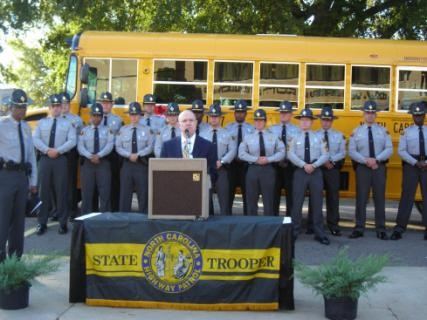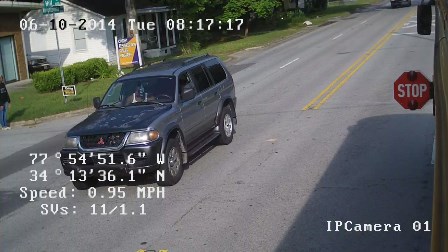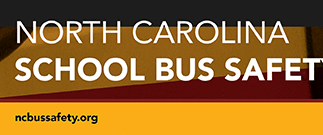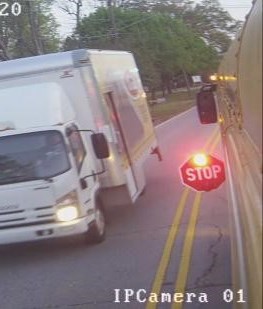Tracking & Prosecuting School Bus Stop-Arm Passing Violations
Article by Thomas Cook, Pupil Transportation Group, ITRE
Introduction
During the 2013 North Carolina legislative session, funding was provided to support the installation of stop-arm cameras on school buses by school districts. According to the Department of Public Instruction (DPI), Transportation Services Section, camera systems had been installed in, or purchased for over 800 school buses throughout the state at the end of 2014. While many school districts have purchased four camera systems, the number funded by legislative grants, 20 districts have purchased more than four camera systems.
The Institute for Transportation Research and Education (ITRE) surveyed school district transportation directors in December 2014 to learn about the procedures they use with local law enforcement personnel and District Attorney’s Offices to track and prosecute school bus stop-arm passing violations. ITRE is also assisting the DPI with an ongoing effort to collect information on passing violations as they occur during the current school year, and through the 2015-16 school year.
Survey Findings
The survey asked for information on how information was provided to law enforcement and District Attorney’s Offices, the working relationships with those agencies, and activities conducted with the media to promote public awareness of the magnitude of the stop-arm passing violation problems.

Email and a flash drive were the two predominant methods school districts used to transfer recorded evidence to law enforcement and District Attorney’s Office personnel, and several districts transfer material through direct contact with those personnel. However, more than 40 percent of those responding to the survey indicated that they did not have a procedure in place to provide recorded evidence to local law enforcement personnel.
Interactions with law enforcement personnel related to the prosecution of stop-arm passing violations were generally described as being positive, such as:
- “All interactions with NCHP and Local Law Enforcement are positive. All sides are willing to work together concerning violations.”
- “Officers are appreciative of the technology.”
- “They have been very impressed with what we can provide.”
- “Positive – They will send Officer out to monitor trouble stops, follow buses, and even ride buses.”
- “NC Highway Patrol other Law Enforcement are amazed to see the information we are getting on video! Their words are that this is a smoking gun in court. That there is no way that the driver can deny or get out of the video.”
Fewer school districts indicated having developed working relationships with their local District Attorney’s Office than with law enforcement personnel, as illustrated by these comments:
- “We have only worked with the Highway Patrol to this point.”
- “Only use Highway Patrol as contact. They meet with DA.”
- “Don't have (a working relationship with the DA’s Office). Working primarily with law enforcement.”
- “Law enforcement officers handle it after determining if charges are warranted.”
The following descriptive response indicates the degree to which communication may not be present between local school personnel and the DA’s Office:
- “There is not much interaction with the DA's office. I send information and it is sometimes days (maybe weeks) before I hear anything again. I know they are busy so I try and leave them alone but I would really like a quicker response to at least acknowledge that they have received the material. If a case gets continued, I have to look it up myself on the public court document site to see the new court dates. I would like to be kept in the loop, but I at least have their attention now and it is a start at least.”
The need for local school districts to develop better working relationships with local DA’s Offices was highlighted by an indication by only 21 percent of respondents that they had established procedures to provide recorded evidence of stop-arm passing violations to the DA’s Office.
However, providing recorded evidence to the DA’s Office may not result in effective prosecution. Several school districts indicated problems with the courts using recorded evidence to prosecute violations, as evidenced in the following comments:
- “Law enforcement loves it. When we go to court it is a different thing. The courts don't ask for it so they plead to a less sentence.”
- “I have a GREAT rapport with SHP and they try really hard to issue a citation on every violation. My issue is that the process really slows down when it get to the DA. The standard procedure in the past has been to send to driving school and reduce the ticket in improper equipment. I (think) I am turning this around though; the DA has been personally calling me on the last couple of violations to discuss things.”
On a positive note, many school districts described their activities working with local media to highlight the use of stop-arm cameras to help decrease the number of school bus stop-arm passing violations. Many of the districts had been featured in an article in a newspaper, or on radio or television. Other districts, while not mentioning a specific event, indicated that they are in contact with the media. The need to maintain an ongoing relationship with local media to keep getting school bus safety information to the public was summed up well by the comment, “It is a work in progress and we are constantly working to inform the public on awareness.”
On-Going Data Collection
In April, the DPI provided a link to a web-based form that will be used to collect information on recorded stop-arm passing violations. ITRE will periodically compile and summarize the data. The purpose of this on-going data collection activity is to gather comprehensive information on passing violations statewide. The data will include the locations of stop-arm passing violations, which can help law enforcement personnel to work with school districts on activities to reduce stop-arm passing violations.




